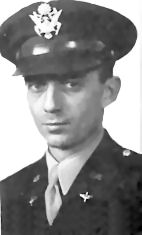An Ultra-mini biography (derived solely from Marcel’s Military Records file)
Jesse Antoine Marcel was born May 27, 1907 to Theodule and Adelaide Marcel in Terrebonne Parrish,
Louisiana. He apparently spent his whole youth there, as he graduated from Terrebonne High School.
The story of Jesse Marcel's role
in the Roswell Incident has taken many
interesting turns over the years.
As the original Prime Witness, Jesse's status with many Roswell Crash Advocates sometimes
borders on sacred. But... as it so often happens in the Saga, a few problems with Jesse's
story
have emerged.
- The Myths of Jesse Marcel
- Comment and Analysis: "The Evolution of a
Roswell Witness"
After high school, he worked as a draftsman for the Louisiana Dept of Transportation, the US Army
Corps of Engineers, then for the Shell Oil Company as a cartographer, specializing in making maps
from aerial photography. Along the way, he served two three-year enlistments in the National
Guard—In Louisiana from 1925 through 1928 then in Texas from 1936 through 1939.
He and his family (wife and one son, Jesse A. Marcel Jr.) were living in Houston TX when WWII
broke out, and in March 1942 at the age of 35, he applied for and was given a commission as a
2nd Lieutenant in the U.S. Army Air Force. Based on his experience in mapping and analyzing
aerial photography, the Army sent him off to Harrisburg, PA for training as an Combat Photo
Interpreter/ Intelligence Officer.
 Major Jesse A Marcel Major Jesse A Marcel
Jesse did well in intelligence school—well enough that his next assignment was to be an
instructor at this school. Eventually the Army granted his request for combat, and in
October of 1943, 1st Lieutenant Marcel found himself assigned to the 5th Bomber Command
in the southwest Pacific Theater. For the next two years, Marcel fought the war first
as a Squadron Intelligence Officer then Group Intelligence Officer, participating in
several campaigns that resulted in the retaking of the Philippines Islands.
During his combat tour, Jesse performed his duties
well. His commanders rewarded his work and abilities with two Air Medals, the Bronze Star, a
promotion to Captain, and then to Major in May, 1945.
Just before the dropping of the Atomic Bomb, Major
Marcel was sent back to the States to get training in the use of
Airborne Terrain Mapping Radar systems.
With the war over, Marcel was reassigned in
January, 1946 to the 509th Composite Group at the Roswell
Army Air Force Base (The 509th later became the 509th
Bombing Group and then, with the separation of the Army Air Corp as the U.S.
Air Force, the 509th Bombing Wing.)
In July 1947, Marcel briefly found himself the center of
attention when he brought in the debris of a “Flying Disk” that Mac
Brazel had found on Foster’s Ranch.
In August 1948, he was transferred to the Strategic
Air Command, where he was eventually put in charge of a Pentagon
briefing room for the Air Force Office of Atomic Energy (AFOAT-1). There his
responsibilities were to make sure that materials (charts,
illustrations, etc) were produced and ready on schedule, and to maintain
the organization of the briefing room staff.
In January 1949, he signed a statement that he
fully intended to continue his career in the Air Force, but in the
following year he received word that his elderly mother required
assistance that his sister could not provide.
His request for a hardship release from active duty was granted,
so in July 1950 he returned to Houma, Louisiana There, he drew on
his long time hobby in Ham Radio to become an Electronic Repairman,
specializing in Televisions, Transmitters and
Receivers. When he was
released from active duty, his commission (as a Lieutenant Colonel) was
transferred to the Air Force Reserves, and he eventually received his
full discharge in 1958.
Jesse Marcel died in 1986 at the age of 79.
Jesse, in spite of his claim that he was under
orders to never, ever talk about his role in the alien disk recovery,
occasionally did let on to others that that he had been once involved in
a UFO recovery. In 1978, one
of his Ham Radio correspondents mentioned Jesse’s story to Stanton
Friedman, a UFO researcher, and this led to telling his story of the
Flying Disk to the world.
|